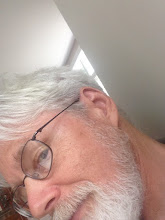Taking Proactive for a Spin
Dear Readers,
Council member Barry rode in on a white horse last council session.
I don’t know what reforms were discussed in the council’s informal meeting last month to explore ways to make meetings shorter and more efficient, but I have a suggestion. They should all emulate ward six’s Doug Barry. The guy knows how to talk with purpose, without “ummming” and “uhhhing,” and without rambling. The rest of you council members (with perhaps the exception of Marc Elrich), take note! [This is not to say that Gilbert would do any better, you understand]
At the most recent (January 3rd) council meeting Barry barely spoke, but when he did speak his erudition was like a blast of oxygen, and he made probably the best contribution to the evening’s proceedings.
He presented a proposed 10 point plan for development of the New Hampshire Avenue Corridor.
I wish I could share that plan with you, but I don’t have a copy. I e-mailed Mr. Barry for one, but apparently he was busy grooming his horse. I was hoping it was available on the city web site, and indeed it may have been included in the the background information pdf file that one can download. That document is 39 pages long, but alas, as is all-too typical of city downloads, 37 pages are completely blank.
Whatever is in the 10 point program - which was described by Barry as a list of suggestions for projects that encourage affordable housing, pedestrian traffic, a sense of community, and a “sprucing up” - the rest of the council was galvanized. Watch for more on this 10 point plan!
This occurred near the end of a meeting which was a walkthrough of some of the thorny development issues facing the city, and what realistically can be done about them.
Remember the buzzword “proactive” from the election campaign? The mayor, in the face of criticism that her governing style is merely reactive, pledged to be proactive - especially on the subject of development. Pro activity got taken for a test drive by the council last session, and . . . had to be taken back to the shop.
The council discussed both the WAH site and the New Hampshire Avenue Corridor, and as a high number of ongoing and potential development projects was described in these and other parts of the city (including the breaking news that the old VFW hall on Fourth Avenue is now for sale), Council member Seamens called fervently for the city to craft a proactive stance on development.
But City Administrator Barbara Matthews pointed out that 1) coming up with such a proactive stance would require more resources (staff and money) than the city has, and 2) we already have a city master plan. There are only 2 full-time city employees dedicated to city development and they are plenty busy as it is, she said.
Council members Bruce Williams and Marc Elrich pointed out that there is a county development office that should be helping the city. Elrich, in a characteristic rant, said the city can’t come close to matching what the county development office does. There’s nothing the city could do that the county doesn’t already - or could if it were pressed. He complained that the county office previously made improvements that stopped just outside the city border, and currently ignores the New Hampshire Avenue corridor. Elrich also pointed out that “we don’t have jack to say” beyond the master plan zoning. He opined that the most effective action the city can take is to have designer charettes. Out of these would come community approved guidelines - so developers can see the “path of least resistance.” He said these are more realistic solutions, not more staff or spending.
It seems that all parties involved in the potential Washington Adventist Hospital (WAH) move are nervous and touchy. The agenda item read, “Discussion of the process for review of future development of the Washington Adventist Hospital site.”
No sooner had Suzanne Ludlow explained the tricky zoning situation the city might face if the hospital leaves - it will have relatively little say about what gets built if it reverts to residential zoning - when council members and citizens rose to object to the discussion itself. Council member Joy Austin-Lane and Marc Elrich both urged the council to focus on getting the hospital to stay where it is. Both are concerned with the loss of jobs and health care in the community. So too were residents Rino Aldrighetti and Irwin Mack, both longtime community activists. All said something to the effect of “The corpse isn’t dead yet,” and they were afraid that somehow discussing plans for a post-WAH city would cause it to happen, or perhaps insult the hospital’s board.
However, everyone who expressed these worries also expressed fears that if the hospital DID move, whatever replaced it might not be good for the community.
Mayor Porter tried to assure everyone that the city did not want WAH to go, but since the threat of its exodus was real, plans for that contingency should be made. She cited, as she has numerous times before, that she has the assurance of Jere Stocks, the hospital president, that he would work with the city in any contingency.
The mayor requested city staff to compile a list of stake holders in the fate of the WAH site so that a committee can be set up. Objections to such a committee were raised by Council member Clay on the grounds of group dynamics. It would be dominated, she feared, by people who stuck out a long series of meetings. She asked that the number of meetings be kept to a minimum, so that all those who showed up once or twice would have equal voice to those who showed up for all meetings. The mayor added these concerns to the staff request.
- Gilbert


0 Comments:
Post a Comment
<< Home